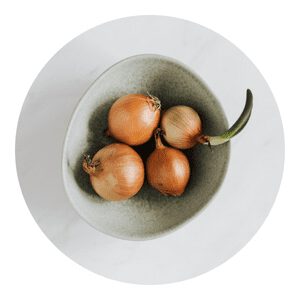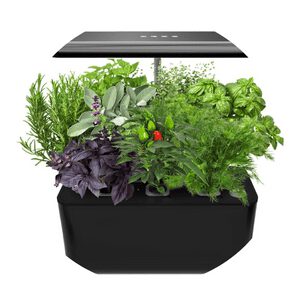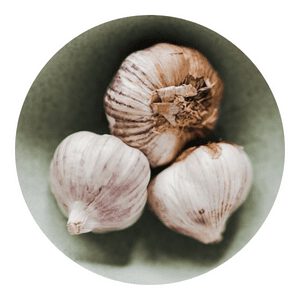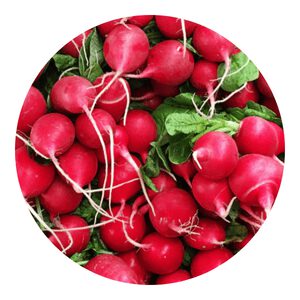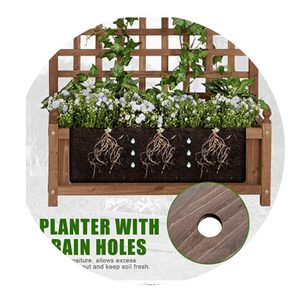Ruby Red Onion
Chappy the gardener is back with another helpful guide, this time on how to grow ruby red onions.
Ruby red onions are a delicious and nutritious addition to any meal, and with Chappy’s help, they’re easy to grow at home.
This guide covers everything you need to know about growing ruby red onions, from choosing the right variety of onion for your climate to planting, watering, and harvesting.
With Chappy’s tips, you’ll be able to grow a bumper crop of ruby red onions that will add flavor and nutrition to your meals all year long.
Ruby Red Menu
Onions are a kitchen staple that can be used in a multitude of recipes, and the ruby red onion is a type of onion that is especially versatile.
This type of onion has a deep red color and a slightly sweet flavor.
Ruby red onions can be used in salads, sandwiches, soups, and even desserts!
How to grow Ruby Red Onion
Ruby Red Onion is a variety of onion that is popular for its deep red color. This onion variety is known for its sweetness and can be used in a variety of recipes.
Here are some tips on how to grow Ruby Red Onion:
To start, choose a sunny spot in your garden with well-drained soil. You will also need to make sure that the area you choose is free of any weeds.
What is the best organic fertilizer for onions
Organic fertilizers are a great way to give your onions the nutrients they need to grow strong and healthy.
But with so many different types of organic fertilizer available, it can be hard to know which one is best for onions.
Here are a few things to keep in mind when choosing an organic fertilizer for onions:
-Onions are heavy feeders, so look for a fertilizer that is high in nitrogen.
-Since onions are prone to foliar diseases, look for a fertilizer that also contains sulfur or copper.
-Organic fertilizers come in many forms, such as compost, manure, and blood meal. Each has its own set of benefits, so choose the one that best fits your needs.
Compost is a great all-around fertilizer for onions. It provides them with nitrogen, sulfur, and other essential nutrients.
planting Ruby Red Onion
The best time to plant Ruby Red Onion is in the spring, after the last frost.
Choose a sunny spot in your garden with well-drained soil.
You can either start your onions from seed or purchase young plants from a nursery.
To plant from seed, sow the seeds about ¼ inch deep and 2 inches apart in rows.
Once they germinate, thin the seedlings so they are 4-6 inches apart. Onions will take about 90 days to mature.
To plant young plants, dig holes that are twice as wide as the roots and just deep enough so that the top of the root ball is level with the soil surface. Space plants 4-6 inches apart in rows.
Water your onions regularly, especially during dry spells.
soil health
There are a number of factors to consider when it comes to soil health and Ruby Red Onion.
The first is the type of soil that the onion is planted in. This will affect the amount of water and nutrients that the onion is able to uptake.
The second factor is the pH of the soil. Onions prefer a slightly acidic soil with a pH between 6.0 and 6.5.
The third factor is the organic matter content of the soil.
A good level of organic matter will help to improve drainage and aeration while also providing essential nutrients for plants.
Lastly, the temperature of the soil is important for onions.
They prefer cooler soils with temperatures between 60-70 degrees Fahrenheit.
By following these guidelines, you can ensure that your Ruby Red Onion will have the best chance at a healthy growing season.
To grow your own Ruby Red Onion, Follow these simple steps and you'll be in for a treat! 1. Start off with an onion bulb, 2. Plant it in some good quality soil, 3. Make sure it gets plenty of sunlight and water, 4. In a few weeks you'll see new growth, 5. Keep up the good care and soon enough, 6. You'll have your very own Ruby Red Onion!
Chappy The Gardener
pests and diseases
Pests and diseases can cause havoc in the garden, and onion is no exception.
Here are some common pests and diseases that can affect your Ruby Red Onion crop:
• Aphids – These small, sap-sucking insects can cause stunted growth and decreased yields. They are often found on the undersides of leaves, and can be controlled with an insecticide.
• Downy mildew – This fungal disease affects the leaves of onions, causing them to turn yellow and eventually die. Downy mildew thrives in cool, damp conditions, so it’s important to water your onions at the base of the plant (not from above) to reduce the risk of this disease.
• Thrips – These tiny insects suck the juice from onion plants, causing leaves to become distorted and discolored.
harvesting Ruby Red Onion
The Ruby Red Onion is a type of onion that is typically harvested in the summertime.
This onion gets its name from its reddish hue, which is caused by a higher than average amount of anthocyanin in the skin.
The Ruby Red Onion is a popular choice for salads and other dishes where a pop of color is desired.
When harvesting this type of onion, it is important to wait until the bulbs are fully mature.
If the bulbs are not mature, they will not have the characteristic red color and may be less sweet.
To check for maturity, farmers typically pull up an onion and check the size and color of the bulb.
Once harvested, Ruby Red Onions can be stored in a cool, dry place for up to two months.
When should red onions be planted?
Onions are a cool weather crop and can be one of the first vegetables planted in the spring.
In most regions, red onions can be planted as early as February or March.
The key is to get them in the ground before the temperatures start to warm up too much.
Once onion plants start to form bulbs, they will be ready to harvest in about 90 days.
To get a jump on the growing season, many gardeners start their onions indoors from seed.
This gives the plants a head start on the growing season and ensures that they will be big and strong by the time they are ready to be transplanted into the garden.
Starting onions from seed can be a bit tricky, but with a little patience and some TLC, you can grow your own onions from seed successfully.
How many onions do you get from one plant?
When it comes to onions, there is no such thing as too many.
But how many onions does one plant yield?
The answer may surprise you. One onion plant can yield up to 10 onions.
This is possible because each onion has the ability to produce multiple bulbs.
Each bulb will continue to grow as long as the conditions are right.
So, if you want a never-ending supply of onions, make sure to plant at least one onion per person in your household.
Do onions need water everyday?
No, onions do not need water every day.
They are a relatively drought-tolerant plant and can go several days without water.
However, they will produce a higher yield if they are given water on a regular basis.
The best way to water onions is to give them a deep watering once a week.
How long does it take to grow red onions?
Red onions are a variety of onion that is grown for its reddish-purple skin and white or pinkish flesh.
They are popular in many cuisines and can be used in a variety of dishes.
Red onions take between 60 and 75 days to mature and should be planted in the spring.
They need full sun and well-drained soil to grow best.
Once they are mature, they can be harvested and used fresh or stored for later use.
Can onions grow in pots?
You can grow onions in pots, but you’ll need to select a container that’s at least 8 inches deep and has drainage holes.
Choose a well-drained potting mix, and plant your onion sets or transplants 1 to 2 inches deep.
Water regularly so the soil stays moist but not soggy. When the tops of the onions begin to yellow and fall over, stop watering and allow the bulbs to mature in the dry conditions.
Harvest when the necks of the bulbs are soft and the skins are papery.
How do you plant red onion sets in pots?
To plant red onion sets in pots, choose a pot that is at least 6 inches deep and has drainage holes.
Fill the pot with a well-draining soil mix and amend it with compost.
Plant the onion sets about 2 inches apart and 1 inch deep, then water them well.
Keep the soil moist but not wet and fertilize monthly.
When the onions are about 4 inches tall, thin them to one per pot.
Continue to water and fertilize as needed until the onions are ready to harvest.
What kind of soil do onions like?
Onions are a type of root vegetable that belong to the Allium genus, which also includes garlic, chives, and leeks.
They are biennial plants, meaning they take two years to complete their life cycle.
In the first year, onions form a small bulb underground made up of many layers.
The second yearCrisphead Iceberg Lettuce Seeds, the onion will grow a long stem with leaves at the top.
When the plant flowers and sets seed, it will die.
Onions can be grown in a variety of soils, but they prefer loose, fertile soil that is well-drained.
Onions do not like wet soil because it can cause the bulbs to rot. The ideal pH for onion growth is between 6.0 and 7.0.
Do onions like coffee grounds?
Onions like coffee grounds because the coffee grounds provide a source of nitrogen for the onions.
The coffee grounds also help to keep the onions moist.
In conclusion, growing Ruby Red Onions is a fun and rewarding experience.
By following the tips in this guide, you can successfully grow your own onions at home.
If you have any questions or need more information, please leave a comment below and I will be happy to help.
Click To Grow
Helps Us Grow – Share If You Like






